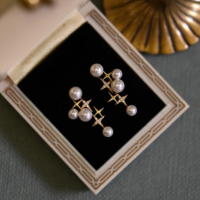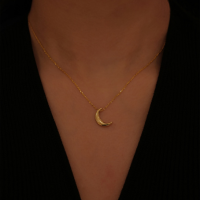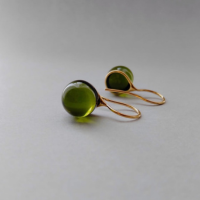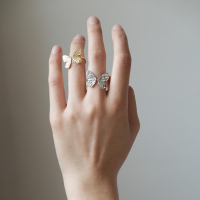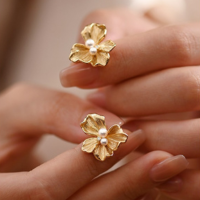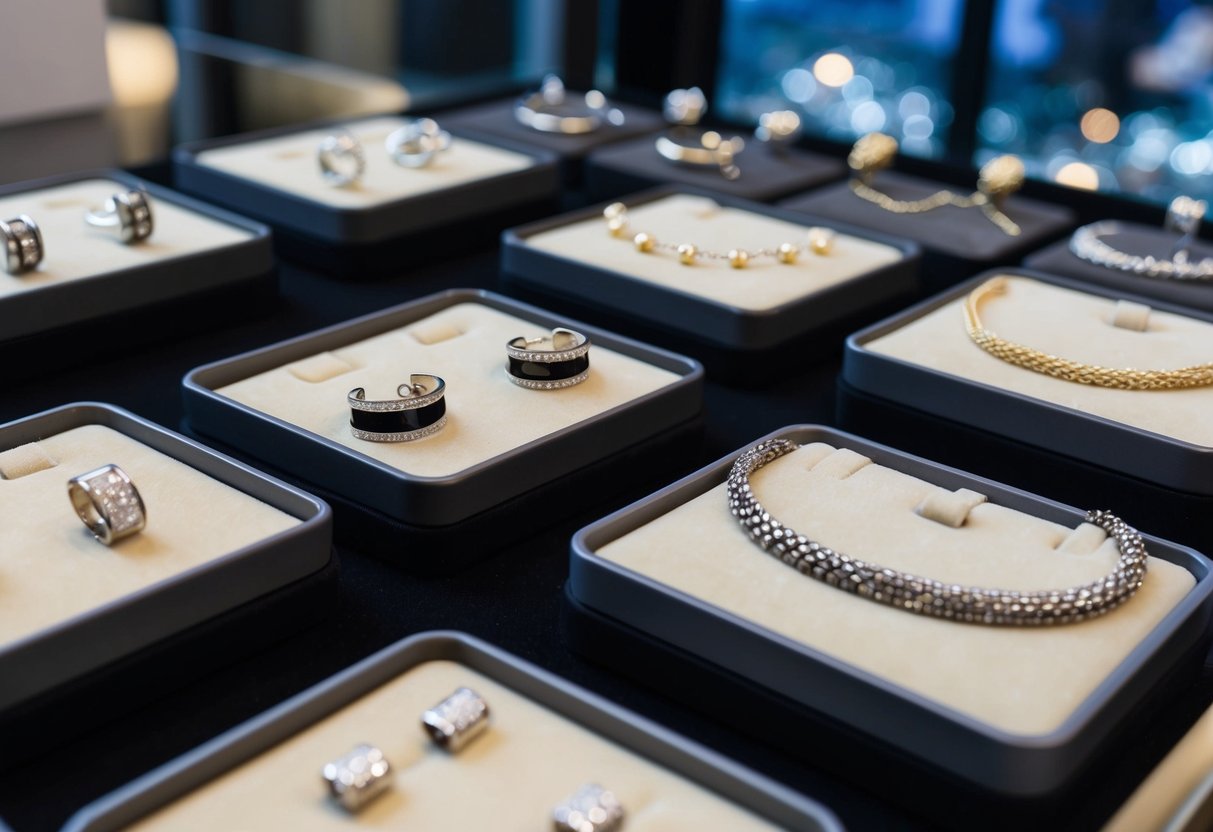
What Is Hypoallergenic Jewelry
Check out our personalized jewelry collections! (kids drawing jewelry, coin jewelry, wire jewelry, fingerprint jewelry, handwriting jewelry, and more)
When it comes to wearing jewelry, comfort and safety should be top priorities. Hypoallergenic jewelry is designed to be less likely to cause an allergic reaction. These pieces often use materials such as titanium, stainless steel, or platinum to minimize skin irritation. By choosing hypoallergenic options, we can enjoy beautiful pieces that are also gentle on the skin.
We often hear about the importance of fashion choices that are both stylish and practical. Those with sensitive skin understand the challenge of finding jewelry that doesn’t irritate. With the growing popularity of hypoallergenic jewelry, there are now more options available than ever before. Whether it's earrings, necklaces, or bracelets, these pieces ensure we don’t have to compromise on style to maintain comfort.
As we explore hypoallergenic jewelry, there are several factors to consider. Knowing which materials to look for helps us make informed decisions. Choosing hypoallergenic jewelry means fewer worries about uncomfortable reactions. We can focus on expressing our style with pieces that are both elegant and safe to wear.
Key Takeaways
- Hypoallergenic jewelry reduces the risk of skin irritation.
- These pieces are made with materials like titanium and stainless steel.
- Style and comfort can be achieved with hypoallergenic options.
Understanding Hypoallergenic Jewelry
Hypoallergenic jewelry is designed for those of us with sensitive skin. This type of jewelry reduces the risk of allergic reactions. Allergies often occur with metals like nickel, a common component in many accessories.
Certain metals are better choices for sensitive skin. Stainless steel, titanium, and platinum are less likely to cause irritation. Gold, especially 14k and higher, is usually safer because it contains less nickel.
Why should we care? Allergic reactions can cause redness, itching, and rashes. That’s not what we want when wearing our favorite pieces!
Many people are unaware they have sensitive skin until they experience a reaction. Investing in hypoallergenic options can help us enjoy our jewelry without discomfort.
Look for items labeled as nickel-free. Also, pay attention to coatings that provide a protective barrier. Jewelry labeled as "hypoallergenic" might still contain small traces of nickel. It's always good to check materials used.
Here’s a quick list of hypoallergenic metals:
- Stainless Steel
- Titanium
- Gold (14k and above)
- Platinum
- Niobium
Sometimes, changing the clasp or backing can help. Swapping these parts for hypoallergenic versions offers a simple solution. This is particularly useful for earrings.
Materials Commonly Used in Hypoallergenic Jewelry
Hypoallergenic jewelry is popular for those with sensitive skin. Materials like surgical stainless steel, titanium, sterling silver, gold, and platinum offer safe, stylish options that reduce allergic reactions.
Surgical Stainless Steel
Surgical stainless steel is a popular choice for hypoallergenic jewelry. It's durable and resistant to tarnishing, making it ideal for everyday wear. We often use it in earrings and watches because it doesn't irritate the skin. This type of steel contains a low amount of nickel, reducing the chance of allergies. Furthermore, it's affordable and can be polished to a high shine, which adds to its appeal.
Titanium
Titanium is another excellent material for hypoallergenic jewelry. Known for its lightweight nature, it's comfortable for long wear. Many of us appreciate its strength and resistance to corrosion. It's great for body jewelry, like piercings, as it doesn't react with body tissues. Titanium lacks nickel, making it a safe bet for sensitive skin. Plus, its modern look suits contemporary styles, offering a sleek choice for fashion lovers.
Sterling Silver
Sterling silver consists mostly of pure silver, often alloyed with copper to increase its strength. This metal is beloved for its gleaming appearance and versatility. While it can tarnish over time, a quick polish restores its shine. For our customers with sensitivities, it's important to choose sterling silver marked as "nickel-free." This ensures comfort while flaunting that classic silver style we all love.
Gold
Gold, prized for its beauty and rarity, is often used in hypoallergenic options when it’s 14 karats or higher. The higher the karat, the purer the gold, which typically means less nickel. Yellow gold and rose gold alloys usually have fewer nickel traces than white gold, which may have a higher nickel content unless it's alloyed with palladium or platinum. Gold is timeless and complements any wardrobe.
Platinum
Platinum is the pinnacle of hypoallergenic materials in the jewelry world. Its purity means it's rarely alloyed with nickel, lowering allergy risks. We treasure its shiny, white appearance that doesn't tarnish, offering perpetual elegance. Though it's among the more expensive options, its beauty and hypoallergenic properties make it a worthwhile investment for sensitive-skin enthusiasts wanting luxury.
Benefits of Choosing Hypoallergenic Jewelry
Comfortable to Wear
Hypoallergenic jewelry is gentle on the skin. We often hear from wearers who avoid jewelry due to irritation. Choosing hypoallergenic pieces means fewer worries about itchy or red skin.
Reduces Allergic Reactions
For those with metal allergies, this kind of jewelry is a game-changer. Nickel, a common allergen, is frequently avoided in hypoallergenic selections. Our sensitive-skin customers appreciate the peace of mind.
Durable Materials
These pieces are often made from strong materials like titanium or stainless steel. This means they can last longer and withstand daily wear. We love jewelry that stands up to our busy lives!
Stylish Options Available
Hypoallergenic doesn't mean less fashionable. There are plenty of trendy and beautiful designs available. We can find something for every taste and occasion. From classic to modern styles, these pieces enhance any look.
Suitable for Everyone
Men, women, and children can enjoy hypoallergenic pieces. This inclusivity makes it easier for us to pick special gifts for friends and family. Everyone deserves to wear jewelry without discomfort.
Perfect for Everyday Use
Since these pieces won't irritate the skin, they can be worn daily without worry. Whether we're at work or a party, hypoallergenic options fit any setting comfortably. Enjoying our favorite accessories all day, every day, is possible.
Identifying Hypoallergenic Pieces
When choosing hypoallergenic jewelry, it's important to look at materials. Nickel-free metals like titanium, surgical stainless steel, and platinum are good options. These are less likely to cause skin irritations.
Let's pay attention to coatings. Jewelry with high-quality rhodium plating often minimizes skin reactions. It acts as a barrier between your skin and any base metal.
Inspect the label or ask the seller if the piece is hypoallergenic. Many reputable manufacturers will clearly mark their products. Packaging or tags might carry this information.
In our experience, it's effective to test a small area with the jewelry first. If there are no reactions, it might be suitable for regular wear.
It's wise to choose pieces from brands known for their hypoallergenic options. Trusted brands prioritize skin-friendly items.
Using this guide, we can explore beautiful options without compromising comfort. Let's keep our skin happy while enjoying fashionable jewelry!
Caring for Hypoallergenic Jewelry
Taking care of our hypoallergenic jewelry ensures it lasts long and stays beautiful.
1. Regular Cleaning
We should clean our jewelry with mild soap and water. Use a soft cloth to gently wipe each piece, being careful not to scratch it.
2. Safe Storage
Store each item separately to avoid scratches. Consider using soft pouches or lined jewelry boxes.
3. Avoid Chemicals
Keep our jewelry away from lotions, perfumes, and household cleaners. These can cause tarnishing or discoloration.
4. Remove Before Activities
Before swimming or exercising, it’s best to remove jewelry. Chlorine and sweat can be harmful.
5. Regular Checks
Inspect our pieces for any loose parts or damage. Addressing issues early can prevent further damage.
By following these simple steps, we keep our hypoallergenic jewelry looking its best.
Shopping Tips for Hypoallergenic Jewelry
When looking for hypoallergenic jewelry, it's important to be informed and cautious. By examining labels, choosing reliable retailers, and considering custom pieces, we can avoid irritation and find beautiful jewelry pieces that suit our style and needs.
Read Labels Carefully
Labels can tell us a lot about the materials used in jewelry. We should look for words like "nickel-free" or "hypoallergenic" on packaging or tags. Nickel is often a common cause of skin allergies, so avoiding it is important.
Checking if the jewelry is made of titanium, stainless steel, or sterling silver can help us make better choices. These metals are typically safe for sensitive skin. Also, a product may list additional coatings or treatments like rhodium plating that create a barrier between the skin and irritating metals.
Reading carefully can save us from discomfort and help us find pieces that are both beautiful and wearable.
Seek Trusted Retailers
We should buy from stores known for their hypoallergenic jewelry collections. Trusted retailers often have a good reputation and are transparent about the materials they sell. Online reviews can be helpful but it’s wise to look for details on return policies too.
These retailers often offer a wider variety of safe options. It can be a good idea to ask questions while shopping to ensure the pieces fit our specific needs. We might find brick-and-mortar stores helpful for seeing jewelry in person, but buying online can offer more choices.
By choosing reliable sources, we ensure quality and safety in our hypoallergenic jewelry.
Consider Custom Options
Considering custom-made jewelry allows us to choose exactly what we want, including materials that won’t cause skin irritation. Custom options let us work with jewelers to select metals and designs that suit both our skin and style.
Jewelers can suggest alternative metals if certain materials don’t work for us. They might recommend platinum or gold, which are typically friendly for sensitive skin.
Investing in custom pieces can be more expensive, but the comfort and unique designs we get can make it worthwhile. Customization gives us control to create personal jewelry that’s safe to wear every day.
Trends in Hypoallergenic Jewelry
Hypoallergenic jewelry is gaining popularity with its stylish flair and innovative designs. This type of jewelry appeals to those with sensitive skin who still want trendy and fashionable options. New designers are bringing creative designs while embracing sustainability.
Popular Styles
We're seeing a rise in minimalist designs that keep it clean and straightforward. These pieces often feature sleek lines and geometric shapes. Materials such as titanium, stainless steel, and medical-grade plastic are making waves due to their gentle nature.
Another popular trend is layered jewelry. This involves wearing multiple necklaces or bracelets of different lengths and textures. This style is perfect for people looking to make a statement.
Hypoallergenic jewelry empowers us to accessorize without worries, thanks to its skin-friendly features and chic designs that align with today's fashion trends. It's fashion innovation with comfort at its core.
Emerging Designers
New designers entering the scene are focusing on sustainability and uniqueness. They're using recycled metals and eco-friendly materials to create eye-catching pieces that don't irritate the skin.
Designers embrace personalization, offering custom engraving or adding charms for that personal touch. They prioritize creating designs that are not just safe and comfortable but also visually stunning.
We celebrate these pioneers who are reshaping the jewelry landscape by considering both aesthetic and environmental aspects. They help redefine the boundaries of hypoallergenic jewelry, making it a desirable choice for modern fashion enthusiasts.
Environmental Impact of Hypoallergenic Jewelry
When we talk about hypoallergenic jewelry, materials matter. Commonly used metals like titanium and stainless steel are less likely to cause allergic reactions and are known for their durability.
These metals often have a longer lifespan, which means less waste and lower environmental impact. It’s important for us to choose jewelry that lasts to reduce landfill contributions.
Even the production processes of hypoallergenic jewelry can be more eco-friendly. Many manufacturers aim to minimize water usage and avoid harmful chemicals. This helps protect our environment and makes our jewelry choices more sustainable.
Let’s also consider packaging. Some hypoallergenic jewelry brands use recyclable or biodegradable packaging, reducing plastic waste. We can check for eco-friendly packaging when we shop.
Moreover, supporting brands that use responsibly sourced materials makes a difference. Ethical sourcing practices ensure fair treatment of people and better protection for the planet. This means more jobs and resources for communities involved in the production.
Frequently Asked Questions
We often get questions about hypoallergenic jewelry. It’s important for those with sensitive skin to know what materials to look for, how these pieces perform over time, and other essential details.
What materials are typically used in crafting hypoallergenic earrings and necklaces?
Hypoallergenic jewelry is often made using materials like titanium, stainless steel, and sterling silver. These metals are less likely to cause skin reactions and are great for those with sensitive skin.
Can people with sensitive skin wear hypoallergenic bracelets and rings without irritation?
Yes, they can. Hypoallergenic bracelets and rings are designed specifically for people with sensitive skin. They reduce the risk of irritation and are comfortable for everyday wear.
Are there any waterproof options among hypoallergenic accessory choices?
There are waterproof options available. Materials such as stainless steel and titanium are not only hypoallergenic but also resistant to water, making them great choices for waterproof accessories.
How does hypoallergenic jewelry hold up against tarnishing over time?
These pieces generally resist tarnishing better than traditional options. Metals like stainless steel and titanium do not tarnish easily, maintaining their shine and look over time.
What are the benefits of hypoallergenic jewelry for those with metal allergies?
The primary benefit is the reduced risk of allergic reactions. Hypoallergenic jewelry allows those with metal allergies to enjoy wearing accessories without worrying about rashes or discomfort.
How does the durability of hypoallergenic pieces compare to traditional jewelry?
Hypoallergenic pieces are typically quite durable. They are often made from strong metals like titanium or surgical steel, which resist everyday wear and tear better than some softer metals used in traditional jewelry.

